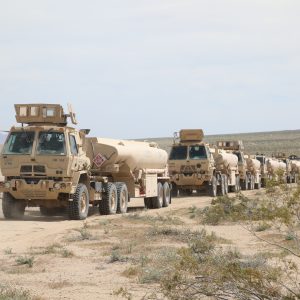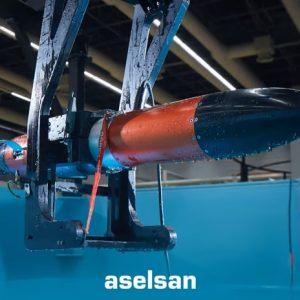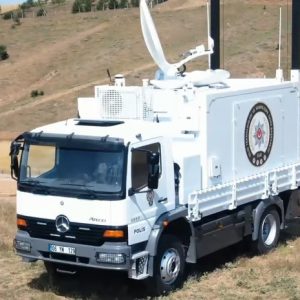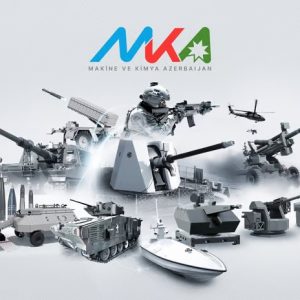Tactical edge computing vs centralized cloud has become a defining choice in modern military digital transformation. The way armed forces distribute computing power now shapes how fast units can sense, decide, and act under fire. It also determines how vulnerable command-and-control becomes to cyber, electronic, and kinetic attack.
Today’s forces are torn between the efficiency of centralized cloud data centers and the resilience of pushing intelligence forward to the tactical edge. The real challenge is not choosing one model over the other, but engineering a hybrid architecture that can survive disruption, degrade gracefully, and still deliver a coherent operational picture when the shooting starts.

Key Facts
- Centralized cloud delivers powerful data fusion and AI, but creates lucrative, fragile command nodes.
- Tactical edge computing moves processing closer to sensors and shooters, reducing latency and improving survivability.
- Recent high-intensity conflicts highlight how quickly large headquarters and data hubs can be detected and destroyed.
- By 2030, most forces are likely to rely on hybrid cloud–edge architectures that can operate in both connected and disconnected modes.
Why Centralized Cloud Still Matters for Militaries
Centralized cloud architectures remain attractive because they concentrate data and compute power. Large data centers allow commanders to fuse multi-domain intelligence, run complex wargaming models, and train and host heavyweight AI algorithms. These environments are ideal for deep learning, long-range campaign planning, and enterprise-wide logistics optimisation.
Many defence organisations are therefore investing in secure defence clouds and global data fabrics. These systems promise a near real-time, multi-domain picture that links sensors, shooters, logistics nodes, and decision-makers across theatres. NATO and Allied defence ministries describe this as building a digital backbone for multi-domain operations [2][3].
The problem emerges when these central nodes become too important. Large headquarters, data centers, and key relay hubs are easy to detect, fix, and target with precision missiles or loitering munitions. They are also vulnerable to cyber operations and electronic warfare. Recent conflicts have shown how quickly static command posts are located and destroyed, leading some observers to characterise parts of Ukraine as a “graveyard of command posts” [4]. When too much decision-making depends on a few cloud hubs, the entire network starts to look like a single, very fragile system.
The Case for Tactical Edge Computing at the Front Line
Tactical edge computing inverts this logic by pushing processing and analytics forward, closer to sensors and shooters. Instead of streaming everything back to the cloud, local nodes ingest and process data on-board. They run AI models on ruggedised processors mounted on vehicles, unmanned systems, or forward command posts.
This approach reduces latency and allows local commanders to decide and act even when bandwidth is scarce or contested. If an edge node can classify threats, prioritise targets, and recommend courses of action without constant connectivity, the force can “fight through” disruption rather than pausing until links to higher echelons are restored.
Edge-centric architectures also align with mission command and distributed operations. When units operate in dispersed formations, they need both delegated authority and the digital tools to exercise it. Tactical edge computing gives junior leaders the ability to exploit local data quickly, instead of waiting for a distant cloud to process and push back guidance.
Latency, Survivability, and Spectrum Contestation
The trade-off between centralized cloud and tactical edge computing becomes most visible in three areas: latency, survivability, and spectrum contestation. Long-haul links to distant data centers add precious seconds to the kill chain. In close combat, that delay can mean the difference between intercepting a threat and absorbing a hit.
Survivability is equally critical. A network built around a few high-value hubs can fail catastrophically if those hubs are neutralised. In contrast, a mesh of many edge nodes can lose individual elements and still function. In a heavily contested electromagnetic spectrum, where jamming and spoofing are expected rather than exceptional, relying on a small number of pristine, high-bandwidth links is a strategic gamble.
Designing Hybrid Cloud–Edge Architectures
The most realistic way forward for modern militaries is not pure cloud or pure edge, but a deliberately hybrid architecture. In this model, centralized cloud resources handle tasks that benefit from vast compute power and data aggregation, such as training AI models, running large-scale simulations, and providing strategic-level situational awareness.
At the same time, tactical edge computing nodes handle time-critical, local decisions. They cache relevant data, host operational versions of AI models, and maintain enough autonomy to continue operating when disconnected. Data moves between cloud and edge when connectivity allows, but the system does not collapse when links are intermittent.
Designing this hybrid environment requires clear rules for data synchronisation and prioritisation. Not every video feed or sensor stream can or should be backhauled to the cloud. Instead, edge nodes may send distilled insights, alerts, and model updates, while the cloud provides new mission data, targeting guidance, or refined AI weights when the network is healthy.
Modular AI and Graceful Degradation
Hybrid architectures work best when AI itself is modular. A given function, such as target recognition or route planning, should be able to run in several modes. At the high end, it might use a large model hosted in a secure defence cloud. At the low end, a compact version should run on a vehicle-mounted processor or even an embedded system.
When connectivity is strong, tactical nodes can lean on the cloud for more complex analytics. When jammed or cut off, they fall back to the local version. This is the essence of “graceful degradation”: the system does not simply stop functioning when quality-of-service declines; it downgrades to simpler but still useful modes.
Data minimalism is another enabler. Instead of trying to ship every raw bit to the cloud, edge nodes focus on sending what is most valuable: detected patterns, fused tracks, and mission-relevant alerts. This reduces bandwidth demand and limits the intelligence available to an adversary if they tap into communications links.
Culture, Governance, and Command Philosophy
Technology alone will not resolve the tension between tactical edge computing and centralized cloud. Command culture and governance must evolve in parallel. Senior leaders need to be comfortable delegating more decision authority to forward units, because those units will have both the data and the tools to act faster than higher headquarters in many situations.
This shift requires new training, new concepts of operation, and clear accountability. Commanders must understand when to centralize decisions for coherence and when to let edge nodes exercise initiative. Data governance and cyber security frameworks must also adapt, ensuring that sensitive information is protected even as it is distributed across many nodes.
At the doctrinal level, hybrid cloud–edge architectures support more agile command-and-control, but they also force militaries to rethink legacy assumptions about hierarchical control. The aim is not to eliminate central headquarters, but to prevent them from becoming single points of failure.
Securing the Digital Initiative
The strategic question is no longer whether to adopt cloud or edge, but how to blend them into a resilient whole. Tactical edge computing vs centralized cloud is best understood as a dynamic balance, not a binary choice. Forces that can shift fluidly between centralized and distributed control, depending on the threat and the environment, will hold the digital initiative.
In future conflicts, adversaries will attack networks as aggressively as they attack platforms. The militaries that succeed will be those that treat cloud and edge as complementary assets, engineer their systems for graceful degradation, and align command culture with the realities of contested, data-rich battlefields.
References
- Defence Agenda – analysis and commentary on defence technology and strategy.
- NATO – official information on Allied digital transformation and multi-domain operations.
- U.S. Department of Defense – resources on command-and-control modernisation and joint all-domain concepts.
- Breaking Defense – reporting and analysis on military technology and command-and-control trends.











